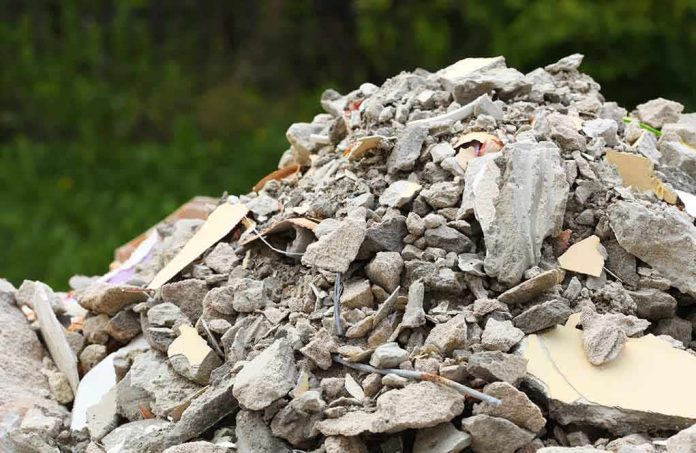
South Korea’s industrial safety is under scrutiny after a power plant collapse claims lives, highlighting systemic vulnerabilities.
Story Snapshot
- Three confirmed dead, two presumed dead, and two missing in Ulsan power plant collapse.
- Demolition of decommissioned plant interrupted by structural failure.
- Rescue operations suspended due to unstable debris and risk of further collapse.
- High-level government response emphasizes urgency and safety.
Tragic Collapse During Demolition
On November 6, 2025, a 60-meter boiler tower at the retired Korea East-West Power Ulsan Thermal Power Plant collapsed during planned demolition. The incident resulted in three confirmed deaths, with two additional workers presumed dead and two others missing. Initial rescue efforts managed to save two individuals; however, one succumbed to injuries in the hospital. The collapse has brought attention to the inherent risks associated with demolishing large, reinforced structures.
In the aftermath, the unstable rubble has posed significant challenges to rescue operations. Authorities have temporarily suspended the search to prevent further casualties due to the risk of secondary collapses. The event underscores the need for stringent safety measures in industrial demolition, a sector with a history of accidents in South Korea.
Government and Rescue Efforts
The South Korean government, led by President Lee Jae Myung, has responded with urgency, deploying resources to assist in the rescue operations. Despite the high-level intervention, the complexity of the situation has slowed progress. Rescue teams, equipped with cranes and rescue dogs, face difficulties accessing the site due to dense debris and instability of adjacent structures. The immediate focus remains on stabilizing the area to resume rescue missions safely.
President Lee has emphasized the importance of both speed and safety in addressing the crisis. This response highlights the government’s commitment to managing the crisis while drawing national attention to the broader issue of industrial safety protocols.
Implications for Industrial Safety
The collapse at Ulsan is not an isolated incident in South Korea’s industrial landscape. It reflects systemic issues in workplace safety and regulatory enforcement. This tragedy has prompted calls for more stringent oversight and possibly new regulations to prevent similar incidents in the future. The economic and social impacts are significant, affecting not only the families of the victims but also the broader community reliant on industrial jobs.
The incident has also sparked public debate about the pressures of economic efficiency versus safety in industrial operations. As investigations continue, the incident serves as a stark reminder of the potential costs of insufficient safety measures in high-risk industries.
Sources:
At least 1 dead, 6 trapped after structure collapse in South Korea
1 dead, 6 trapped after structure collapse in South Korea







